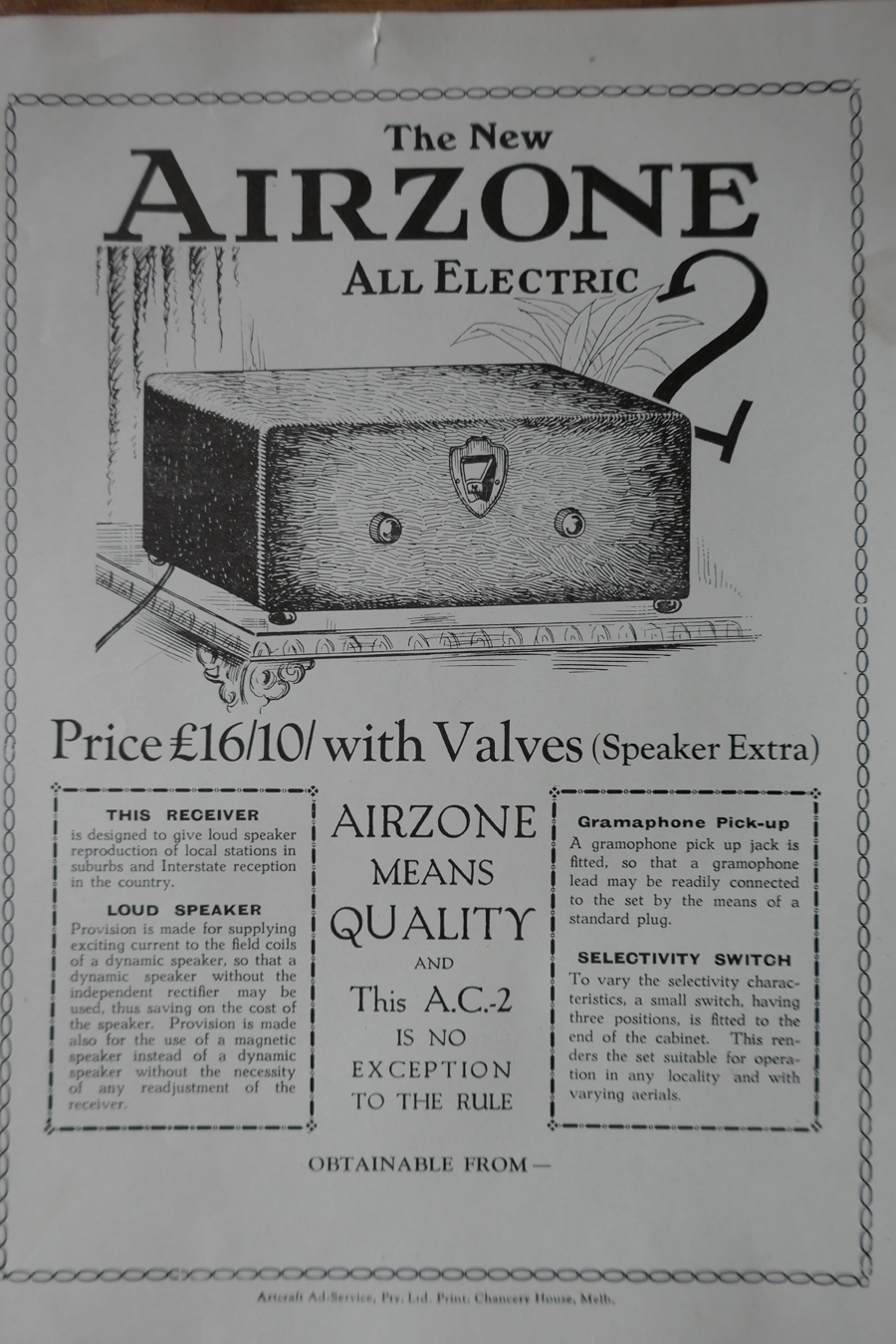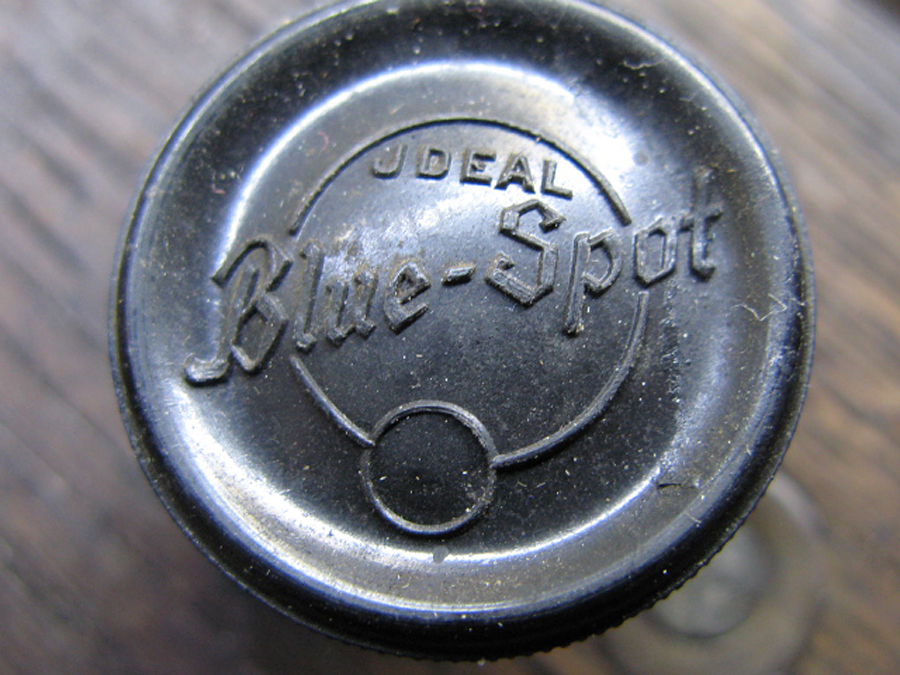General Discussion
Forum home - Go back to General discussion
|
Identifying A Radio
|
|
|
Return to top of page · Post #: 16 · Written at 5:01:01 PM on 20 June 2019.
|
|
|
|
Location: Western Victoria, VIC
Member since 14 November 2009 Member #: 579 Postcount: 110 |
|
OK, I found an ad for the table version. I'll send it to Brad. ‾‾‾‾‾‾‾‾‾‾‾‾‾‾‾‾‾‾‾‾‾‾‾‾‾‾‾‾‾‾‾‾‾‾‾‾‾‾‾‾‾‾‾‾‾‾‾‾‾‾‾‾‾‾‾‾‾‾‾‾‾‾‾‾‾‾‾‾ Robert |
|
|
Return to top of page · Post #: 17 · Written at 7:53:52 PM on 20 June 2019.
|
|
|
|
Location: Brisbane, QLD
Member since 18 September 2010 Member #: 102 Postcount: 301 |
|
Hi Robert, |
|
|
Return to top of page · Post #: 18 · Written at 9:06:14 PM on 20 June 2019.
|
|
|
|
Location: Western Victoria, VIC
Member since 14 November 2009 Member #: 579 Postcount: 110 |
|
Hi Rudolf,  ‾‾‾‾‾‾‾‾‾‾‾‾‾‾‾‾‾‾‾‾‾‾‾‾‾‾‾‾‾‾‾‾‾‾‾‾‾‾‾‾‾‾‾‾‾‾‾‾‾‾‾‾‾‾‾‾‾‾‾‾‾‾‾‾‾‾‾‾ Robert |
|
|
Return to top of page · Post #: 19 · Written at 7:01:01 AM on 21 June 2019.
|
|
|
|
Location: Brisbane, QLD
Member since 18 September 2010 Member #: 102 Postcount: 301 |
|
Hi Robert, |
|
|
Return to top of page · Post #: 20 · Written at 5:25:30 AM on 23 June 2019.
|
|
|
|
Administrator
Location: Naremburn, NSW
Member since 15 November 2005 Member #: 1 Postcount: 7307 |
|
Photo uploaded to Post 18. ‾‾‾‾‾‾‾‾‾‾‾‾‾‾‾‾‾‾‾‾‾‾‾‾‾‾‾‾‾‾‾‾‾‾‾‾‾‾‾‾‾‾‾‾‾‾‾‾‾‾‾‾‾‾‾‾‾‾‾‾‾‾‾‾‾‾‾‾ A valve a day keeps the transistor away... |
|
|
Return to top of page · Post #: 21 · Written at 11:08:30 AM on 23 June 2019.
|
|
|
|
Location: Western Victoria, VIC
Member since 14 November 2009 Member #: 579 Postcount: 110 |
|
Hi Rudolph, ‾‾‾‾‾‾‾‾‾‾‾‾‾‾‾‾‾‾‾‾‾‾‾‾‾‾‾‾‾‾‾‾‾‾‾‾‾‾‾‾‾‾‾‾‾‾‾‾‾‾‾‾‾‾‾‾‾‾‾‾‾‾‾‾‾‾‾‾ Robert |
|
|
Return to top of page · Post #: 22 · Written at 10:01:03 PM on 23 June 2019.
|
|
|
|
Location: Wangaratta, VIC
Member since 21 February 2009 Member #: 438 Postcount: 5257 |
|
There is a description of that speaker in probably Electronics Australia but definitely In Aurthur (?) Cushens Vintage Radio book. I have a copy. |
|
|
Return to top of page · Post #: 23 · Written at 10:13:02 PM on 23 June 2019.
|
|
|
|
Location: Brisbane, QLD
Member since 18 September 2010 Member #: 102 Postcount: 301 |
|
Hi Robert, |
|
|
Return to top of page · Post #: 24 · Written at 8:22:02 AM on 24 June 2019.
|
|
|
|
Location: Brisbane, QLD
Member since 18 September 2010 Member #: 102 Postcount: 301 |
|
Thanks Marcc, |
|
|
Return to top of page · Post #: 25 · Written at 9:39:16 AM on 27 June 2019.
|
|
|
|
Location: NSW
Member since 10 June 2010 Member #: 681 Postcount: 1256 |
|
I have a publication from HRSA by Ray Kelly (a founder member) called HRSA Loudspeaker Notebook, 3rd Edition, 1993. |
|
|
Return to top of page · Post #: 26 · Written at 8:37:29 PM on 1 July 2019.
|
|
|
|
Location: Brisbane, QLD
Member since 18 September 2010 Member #: 102 Postcount: 301 |
 |
|
|
Return to top of page · Post #: 27 · Written at 7:41:17 PM on 2 July 2019.
|
|
|
|
Administrator
Location: Naremburn, NSW
Member since 15 November 2005 Member #: 1 Postcount: 7307 |
|
Photo uploaded to Post 26. ‾‾‾‾‾‾‾‾‾‾‾‾‾‾‾‾‾‾‾‾‾‾‾‾‾‾‾‾‾‾‾‾‾‾‾‾‾‾‾‾‾‾‾‾‾‾‾‾‾‾‾‾‾‾‾‾‾‾‾‾‾‾‾‾‾‾‾‾ A valve a day keeps the transistor away... |
|
|
Return to top of page · Post #: 28 · Written at 8:39:03 AM on 3 July 2019.
|
|
|
|
Location: NSW
Member since 10 June 2010 Member #: 681 Postcount: 1256 |
|
Bluespot it is which I missed in post 19 above. One of the ads in my HRSA book infers British made, though Blaupunkt and Point Bleue names are also used for German and French markets. |
|
|
Return to top of page · Post #: 29 · Written at 7:35:26 PM on 8 July 2019.
|
|
|
|
Location: Western Victoria, VIC
Member since 14 November 2009 Member #: 579 Postcount: 110 |
|
Hi Rudy, ‾‾‾‾‾‾‾‾‾‾‾‾‾‾‾‾‾‾‾‾‾‾‾‾‾‾‾‾‾‾‾‾‾‾‾‾‾‾‾‾‾‾‾‾‾‾‾‾‾‾‾‾‾‾‾‾‾‾‾‾‾‾‾‾‾‾‾‾ Robert |
|
|
Return to top of page · Post #: 30 · Written at 10:05:37 PM on 9 July 2019.
|
|
|
|
Location: Brisbane, QLD
Member since 18 September 2010 Member #: 102 Postcount: 301 |
|
It is a Blaupunkt, "IDEAL" on the knob confirms it. |
|
|
You need to be a member to post comments on this forum.
|
|

Sign In

Vintage Radio and Television is proudly brought to you by an era where things were built with pride and made to last.
DISCLAIMER: Valve radios and televisions contain voltages that can deliver lethal shocks. You should not attempt to work on a valve radio or other electrical appliances unless you know exactly what you are doing and have gained some experience with electronics and working around high voltages. The owner, administrators and staff of Vintage Radio & Television will accept no liability for any damage, injury or loss of life that comes as a result of your use or mis-use of information on this website. Please read our Safety Warning before using this website.
WARNING: Under no circumstances should you ever apply power to a vintage radio, television or other electrical appliance you have acquired without first having it checked and serviced by an experienced person. Also, at no time should any appliance be connected to an electricity supply if the power cord is damaged. If in doubt, do not apply power.
Shintara - Keepin' It Real · VileSilencer - Maintain The Rage

 westvic.com.au
westvic.com.au